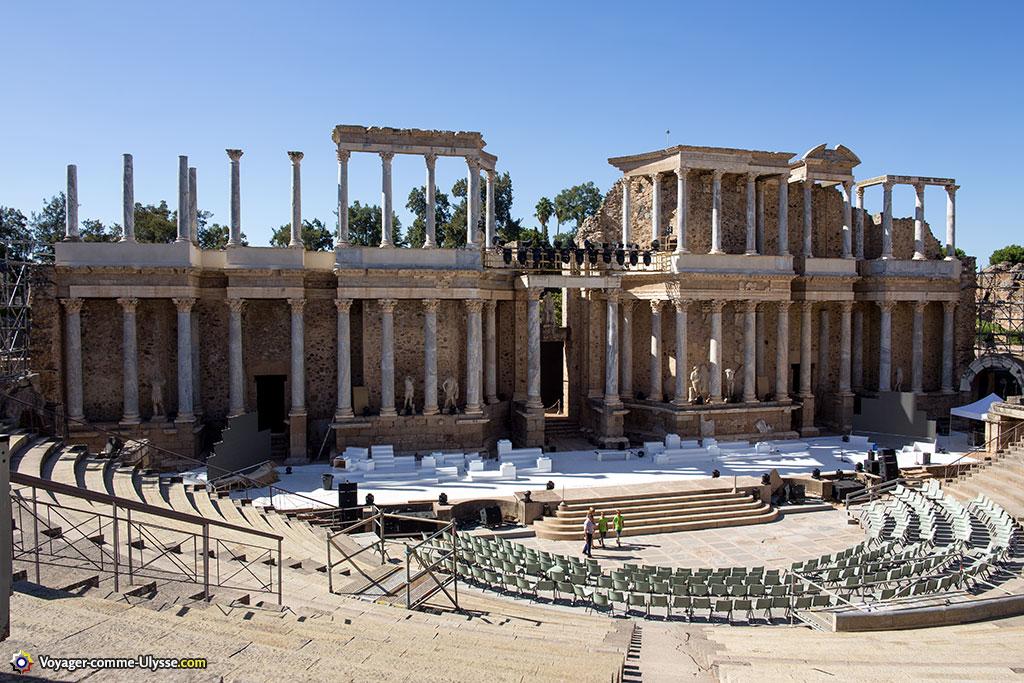Spain: Mérida, the mysterious Roman city<
"Nowadays, Mérida is a TP of classical archeology," said Trinidad Nogals Basarrate, director of the national Roman art museum.Thanks to the impressive restoration of the largest house in the ancient city carried out in 2020, and thanks to a particular attention focused on the balance between tourism and safeguarding of heritage, visitors have good reasons to discover one of the oldestCities of Spain.
Advent and fall of a Roman capital
Augusta Emerita was founded in 25 BC.By the Emperor Augustus as a colony for the soldiers (Emeriti) which was sent back to civil life during the Cantabre wars.The city was ideally placed near the Guadiana river, in a valley between steep forests and green oak fields (whose bark has long been used to produce cork).Auguste made Mérida the capital of Lusitania, a region overlapping the current border between Portugal and Spain.
She also became the home of imperial worship which venerated emperors as gods.Among the traces left by this cult, we found a veiled bust in particular with the effigy of Augustus, represented in Pontifex Maximus, which is exhibited at the Musée de Mérida, but also a Diane temple in the center of the city.The latter (presumably erected during the reign of Augustus) is actually a temple of imperial worship rising from a large podium in granite and whose eardrum points to the sky.
Fan: Haknyeon ah do you know how to say I love you in Cantonese? Haknyeon: bu zhi dao (I don’t know in Chinese) LOOOOOL
— 돼G🍇 Thu Dec 17 13:54:23 +0000 2020
À son apogée, au premier et au deuxième siècle, 40 000 personnes vivaient à Mérida et certaines venaient même d’Asie mineure. La ville est restée un bastion stratégique et une capitale administrative jusqu’à ce que survienne l’occupation mauresque au huitième siècle. Mais quand la reconquista s’est achevée au 12e siècle, cela faisait déjà bien longtemps que la ville n’était plus qu’une note de bas de page sur les rouleaux de l’Histoire. Bon nombre de ses structures « immorales » avaient été remblayées pour faire de la place à des exploitations agricoles et à de nouveaux bâtiments.

There are many other Roman sites outside Italy (in Portugal, Morocco, France ...) "You can find an amphitheater, baths or an aqueduct," comments Marco Mangut, tourist guideEstremadure."But discovering an theater, an amphitheater and a circus-that is to say the three main entertainment structures-is extremely rare outside of Rome.»»
Antiquity and modernity meet
The remarkable ancient structures of Mérida, which is in the least populated and least touristy region of Spain, were relatively easy to uncover."If you go to Rome, the difference between the current level of the soil and the old is about 10 meters.In Mérida, it's half less, and again.We could come across Roman ruins by digging a trench to pass an optical fiber cable, "explains Jonathan Edmondson, professor of Roman history and classic humanities at the University of York in Toronto and co-author of Si Muero,No Me Olvides ("If I die, don't forget myself"), which looks at the social life of Augusta Emerita by taking an interest in the epitaphs that have been discovered there.
Inside the modern city, visitors will come across around thirty monuments (of Roman and Christian influence) administered by the heritage consortium of the city of Mérida.Thanks to regular archaeological excavations and safeguard projects, there is always something new to discover.


 Tags:
Tags: Prev
Prev







